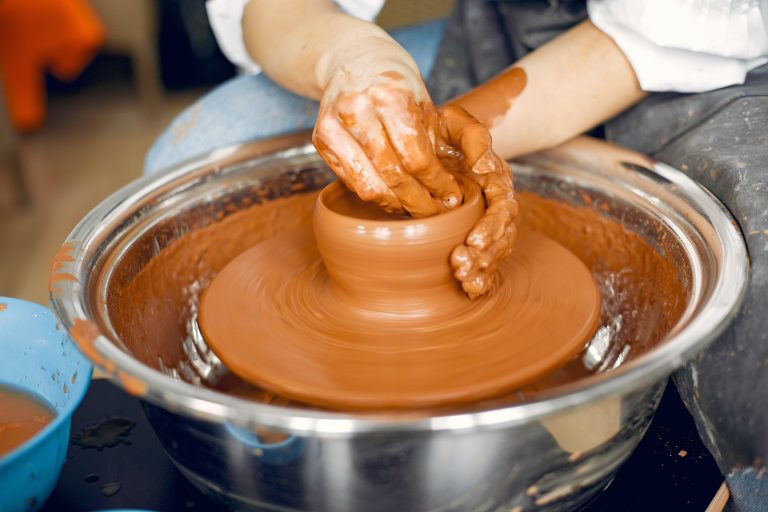In the last part of our series on overcoming artist’s block, we explored how a few simple activities can help us let go of our worries, stresses and everyday thoughts by allowing our mind to wander. Now that we’ve learned how to make room in our minds for new ideas to emerge, it’s time to put them into action.
Start without minding the outcome
While feeling inspired is the ideal state to start creating, we may not always feel it in our bones. However, that doesn’t mean we can’t do something to jumpstart our creative engine. If worrisome thoughts start to creep in, hold your ground and kindly advise yourself: “Don’t think, just do!”
Although it may seem like we are forcing ourselves to create art, this technique can help us conquer our blocking notions by getting ahead of them. Bear in mind that your thoughts — particularly those of doubt and fear of failure — are passing-by clouds and you have total control over what thoughts you pay attention to.
To do this, set a timer for five to 10 minutes, and start creating continuously until the time runs out. For example, if you are a writer, put into words all the thoughts that come to your mind, or if you are a painter, try to make a whole drawing without lifting the pen from the paper. You can modify this technique according to the type of art you do, just make sure you don’t stop until the timer goes off!

Watch your self-talk
By now you may know that maintaining positive thoughts in your mind is a challenging task, let alone keeping stubborn thoughts at bay. The good news is that negative thinking is nothing more than a habit, and just as we unintentionally adopt it, we can actively unlearn it. In fact, our art-making process is a good place to start.
Success
You are now signed up for our newsletter
Success
Check your email to complete sign up
As you prepare to dive into your creative endeavor, make sure you have a pen and paper handy. Whenever a negative thought pops into your mind, write it down as soon as you can and take a brief second to analyze whether that thought is coming from yourself — would you consciously think that way? — or if it is merely a manifestation of your emotions.
Writing it down not only simulates the effect of taking a thought out of your mind. According to a study published in the Journal of Personality and Social Psychology, writing down our thoughts helps us become aware of intrusive notions while “desensitizing” us to them. In other words, it enables us to limit their effects on us.
In addition, writing by hand has an even more profound effect. According to Kate Gladstone, director of the World Handwriting Contest, handwriting helps us process information more thoroughly, as it engages our motor memory, while giving us more time to reflect on the meaning of our words — compared to the quick finger-taps of keyboarding. So next time you spot a blocking thought, fish it out and face it head on. You will be surprised how this simple trick can help you get rid of mental clutter.

Build a creative routine
Whether you are a full-time artist or an amateur, practicing your art daily is the best way to level up your craft. And while rigid routines may seem at odds with spontaneity, they actually save us time and mental energy that would otherwise be spent trying to decide when and where to do things.
There are two essential aspects to budgeting your time as an artist. The first is to master and hone your already developed skills. The second is to acquire new ones.
Repetition and deliberate practice are our allies for continuous improvement of our talents. And while it might not always take 10,000 hours of intensive practice to master a skill — as Malcolm Gladwell’s rule dictates — the common consensus is that practice, especially practice that pushes your skill set to the max, leads to growth.

Revise, refine, repeat
It may be the case that you have spent several hours on the same artistic project and you are ready to move on. The extra effort involved in going back and checking for possible errors sounds almost as daunting as the fear of finding a mistake that will force you to do the project all over again.
Yet the value of creating art lies not in the number of pieces you manage to make, but in the quality of your work; so remember that creating one masterpiece is better than creating a hundred ordinary pieces.

Steel your will and strive to patiently improve your craft, even if it demands a little more time and mental energy. The incomparable sense of accomplishment that comes from doing your best will be worth the sacrifice.
Stay tuned for the last part of this series, and more suggestions for overcoming artist’s block.Click here for Part III of this series: Overcoming Artist’s Block Part III – Simple and Fun Strategies
READ ALSO:















